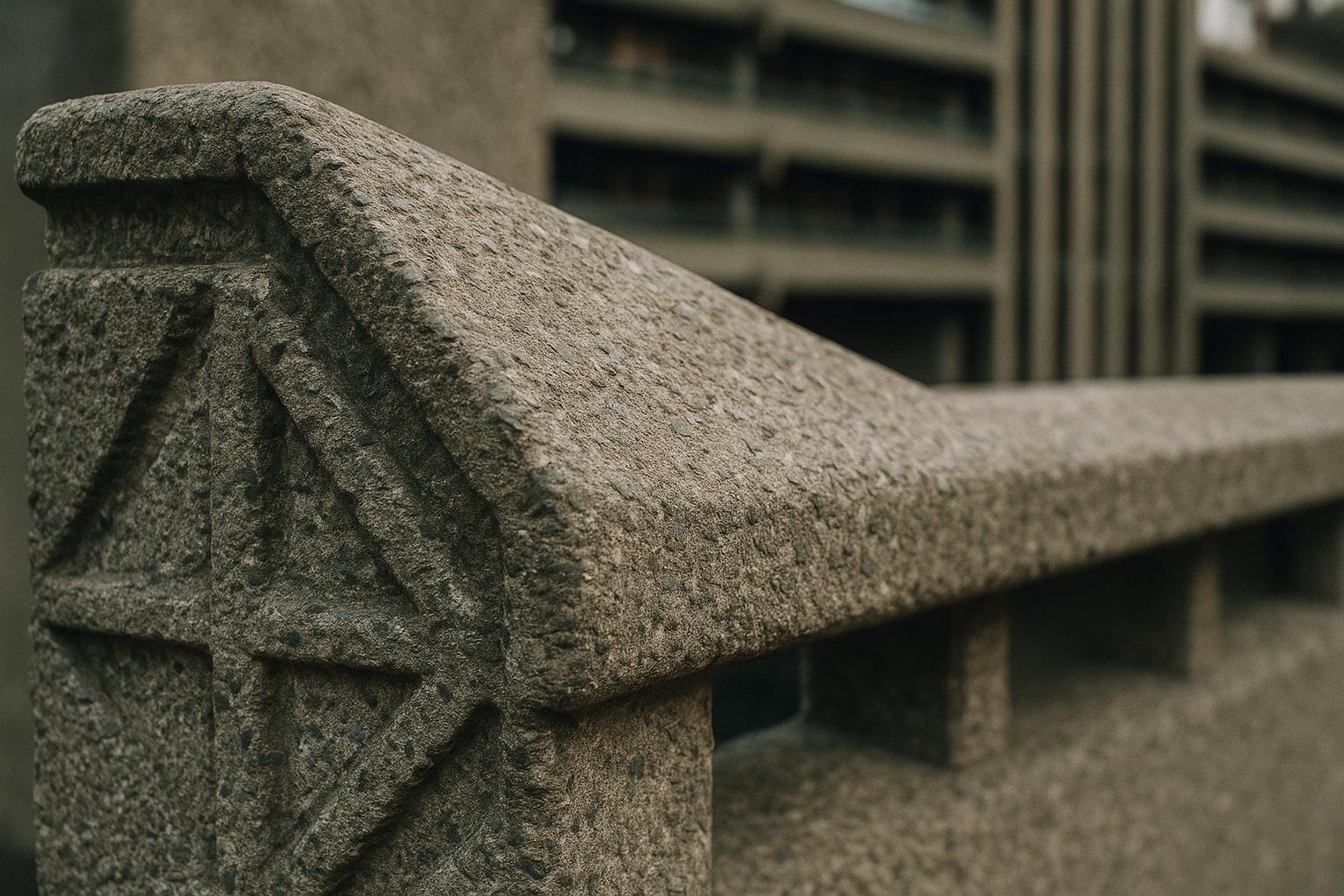Nestled in the heart of London’s financial and cultural core, the Barbican Estate stands as one of the city’s most distinctive and iconic residential complexes. Celebrated for its bold brutalist architecture and self-sustaining community ethos, the estate offers a unique living experience to its more than 4,000 residents. Often described as a ‘city within a city,’ the Barbican blends striking post-war modernist design with an array of cultural and recreational facilities, creating a microcosm of London’s urban regeneration spirit and evolving housing landscape.
Designed by the architectural trio Chamberlin, Powell, and Bon, the Barbican Estate was constructed between the mid-1960s and late 1970s on a 35 to 40-acre site devastated by the Blitz during World War II. Its development was a radical urban renewal project, intended to offer high-quality housing for middle and upper-middle-class professionals working in the City. The estate’s Grade II-listed brutalist buildings include three prominent towers, once among the tallest residential buildings in Europe, and numerous terraced blocks featuring serrated balconies and distinctive rough concrete façades. This architectural ambition culminated in a 1982 inauguration by the late Queen Elizabeth II, who hailed the Barbican as “one of the wonders of the modern world.” Over the decades, the estate has become a symbol of visionary urban planning and the endurance of community spirit amid modernist design.
Residents benefit from remarkable amenities rarely found in such a central location. The estate boasts tranquil private gardens, tennis courts, on-site bars, restaurants, a theatre, cinema, a hairdresser, and a physio. Additionally, the Barbican Centre—renowned for its arts programming—the Guildhall School of Music & Drama, the City of London School for Girls, and a public library further enrich the cultural fabric for those who live there. Concierge services and 24/7 porters who facilitate parcel deliveries and daily rubbish collection enhance the estate’s self-contained nature, fostering a tightly-knit community where residents often organise social events.
However, life in the Barbican is not without challenges. Despite the estate’s many virtues, some architectural decisions that contribute to its distinctive style also bring practical inconveniences. Many flats have rooms with limited natural light, including windowless bathrooms, which some residents describe as bleak. Infrastructure issues stemming from the estate’s original construction era persist, particularly in ageing kitchen fittings that require frequent maintenance. The building’s protected listed status complicates major upgrades, as alterations must be sensitive to its historical and architectural significance. Heating is another concern; the estate utilises a centrally controlled underfloor system managed by the City of London Corporation, leaving residents without individual control and sometimes vulnerable to cold periods outside the heating season. Other quirks include slow lift service and unusual design features such as lift buttons originally serving as ashtrays and carpets that extend partway up the walls.
Despite these drawbacks, many residents express a deep affection for the Barbican’s unique lifestyle and community atmosphere. The convergence of urban living with rich cultural offerings and attentive services provides a compelling balance that residents cherish. While some find aspects of the estate’s design austere or inconvenient, others embrace the space as a vibrant enclave within London, blending historic architectural vision with contemporary urban living challenges.
The Barbican Estate’s history and ongoing evolution exemplify both the promise and complexity of post-war modernism. Its concrete structures and geometric forms capture a distinct architectural era, yet the lived experience within these walls is shaped by practical realities and adaptive community spirit. As the estate approaches and moves beyond its half-century milestone, it remains a focal point for conversations about preservation, urban regeneration, and the unique possibilities of city living in the 21st century.
📌 Reference Map:
- [1] Metro.co.uk - Paragraphs 1, 3, 4, 5, 6, 7, 8
- [2] City of London News - Paragraph 2, 3
- [3] City of London History - Paragraph 2, 3
- [4] E-Architect - Paragraph 2
- [5] Wikipedia - Paragraph 2
- [6] Barbican Life History - Paragraph 2
- [7] Evening Standard - Paragraph 2, 7
Source: Noah Wire Services
